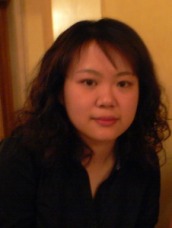Kaiyi Kao
FINALIST OF THE INTERNATIONAL MUSIC PRIZE FOR EXCELLENCE IN COMPOSITION 2009
Composer's Biography

Kaiyi Kao
Kaiyi Kao was born in Taiwan in 1984. She plays the piano since 1991. In 2003, she got a scholarship from “Taiwan National College of Arts” to go to Vienna and study piano and composition in “Franz Schubert Conservatorium”, where she graduated from in June 2009 with outstanding grades. Since 2007 she has been studying composition under professor Schermann at the “Vienna University of Music and Performing Arts”. Furthermore, her composition “Im Windesweben” for solo voice and piano was performed in July 2007 by J. Antal for the international masterclass in Vaduz, Lichtenstein (Masterclass under Kurt Widmer). In May 2008, “Gespraeche” for string quartet was performed by “Ensemble Lux” in Vienna. In May 2009 “Ensemblestueck” was performed by the marimba player Berndt Thurner. In June 2009, she got the first diploma from the Vienna University of Music and Performing Arts. Since 2009 she has been studying composition and Musiktheorie under professor Jarrell and professor Torkewitz in the University. In November 2009, she was awarded the title “Finalist of the International Music Prize for Excellence in Composition 2009”. Her compositions included solo for instrument, string quartet, chamber music, and mezzo soprano with orchestra. The composition “Kontrast” for solo piano will be performed in Concertaison in 2010 with “Gesellschaft für Klangreihenmusik” in Vienna.
Finalist Work: Intermediate Level
| Im Windesweben (for mezzo-soprano and piano) | |
| File Size: | 153 kb |
| File Type: | |
Special Mention Work
| Marimba solo | |
| File Size: | 374 kb |
| File Type: | |
Copyright Statement
The copyright of these works rests with the composer and no quotation from them or information derived from them may be published without the prior written consent of the composer.
Fair Use of these Copyrighted Works
Fair use is a doctrine in United States copyright law that allows limited use of these copyrighted works without requiring permission from the copyright holder, such as for criticism, comment, news reporting, teaching (including multiple copies for classroom use), scholarship or research. Whenever such a copy is made it must bear on the first page of the music the copyright line which appears at the beginning of the works.
For more information on fair use please visit the US Copyright Office.
For more information on fair use please visit the US Copyright Office.
